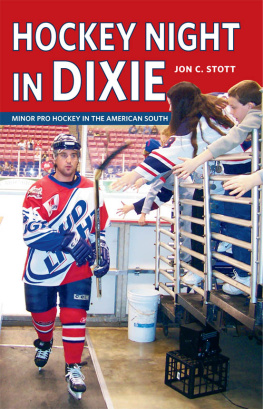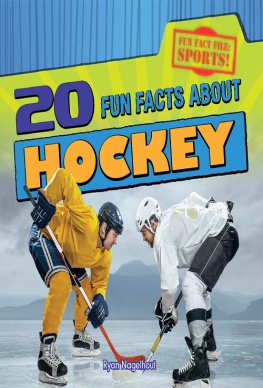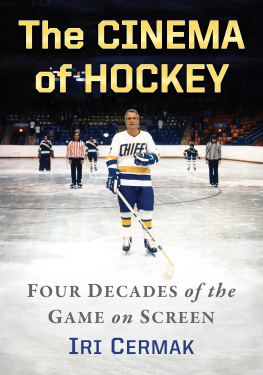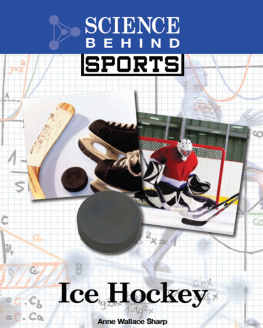The Sorry State Of Today's NHL
The 1972 Summit Series that pitted Canada against the Soviet Union is one of the most seminal moments in the history of hockey. And in that series, one of the heroes for the Canadian team was a gap-toothed, maple-syrup-bleeding, 23-year-old whirling dervish named Bobby Clarke.
Clarke's biggest contribution to that Summit Series tournamentwon, of course, by Canada in a come-from-behind, eight-game victorydid not take the form of a goal scored, a deft assist, or a soul-stirring locker-room intermission speech.
Instead, a large part of Clarke's legacy was forged forever in Game 6 of the Summit Series, when he swung his stick down on the ankle of Valeri Kharlamov and fractured the Soviet star forward's ankle, essentially leaving the Russian star a shell of himself for the rest of his career.
Clarke, meanwhile, went on to enjoy a 15-year career in the National Hockey League (NHL), win two Stanley Cups with the infamously over-aggressive Broad St. Bully Philadelphia Flyers, and retire as a first-ballot Hockey-Hall-of-Famer. Indeed, Clarke embodied the win-at-all-costs mentality that had a stranglehold on elite-level North American hockey long before thenand that still carries sway in the NHL.
Today, even Bobby Clarke thinks things have gone too far and the costs are too high.
Now a 62-year-old executive with the Flyers, Clarke recognizes what most of us who've watched the hockey world recognize: the NHLthe sport's standard-beareris increasingly becoming a league in which the primary goal for its players has shifted from contesting a game to, in reality, surviving it.
As Clarke has noted on numerous occasions, the NHL is long beyond the point where players employ a body check to separate a member of the opposing team from the puck. Now, NHLers are instructed to use themselves as wrecking balls laying waste to the other side, regardless of the consequences for their opponentsor themselves and their own bodies.
You used to hit to separate a guy from the puck, Clarke told me on the set of TSN's Off The Record program. Nowadays, it seems like players hit to separate their opponent's head from his body.
Players have also been emboldened by state-of-the-art protection from Kevlar equipment that could stop a bazooka attack from point-blank range and, at the same time, be used to further decimate the bodies and brains of on-ice adversaries. Player equipment has become as much about protecting the athlete as it is about emboldening them into feeling bulletproof on the ice. As well, modern-day players are far different from their predecessors in that current NHLers use their hard-shell elbow and shoulder pads to obliterate an opponent.
In fact, if the league's worker-bee players don't finish their checkshockey code for, launch your body fully and completely into the rat bastard on the other sidemanagement usually replaces them with high-energy players (another hockey euphemism for encouraged line-crossers) from the minor leagues who are willing to play with an extreme level of aggression in exchange for a healthier paycheck.
More than a quarter-century after Clarke stopped playing in 1984, and due to a variety of factors we'll examine throughout this book, for the sport's best players, the game of hockey is now more dangerous than ever before. Concussions are threatening to end the careers of some of the NHL's best playersincluding Sidney Crosby, the league's biggest marquee superstarand a significant percentage of all NHLers are dealing with head injuries. While advances in medicine and science offer us better indications of the toll taken on athletes in high-impact sports, and while medical officials still speak out against the lack of sufficient player protection in hockey, the best hockey league in the world has simply not moved quickly enough.
The NHL's approach to player safety can correctly be called cavalier, butmake no mistakethe league isn't run by a loose-knit collection of wealthy sadists who are simply in it for the kicks that come with being part of a pseudo Fight Club.
No, theirs (and by theirs, I mean the NHL team owners who tell league president Gary Bettman what to do) is a highly calculated, profit-driven philosophy: a delicate balancing act in which the league must present the appearance it cares while, at the same time, promoting a hyper-aggressive style of play that leads directly to players suffering grievous injuries.
Why do Bettman and the owners try and have it both ways on the issue of violence? For the same reason each and every fast-food store drains small silos of salt in preparing their product: they simply don't believe it will sell without it. Similarly, although fighting and senseless aggressiveness are as unhealthy for hockey as a double Big Mac dipped in lard and formaldehyde is to the average human heart, the NHL operates under the assumption that fighting must be included with the actual on-ice product to make it more palatable for the masses.
In other words, the NHL has no faith in its core product. The NHL markets illegal actsbecause don't forget, all fights are against the rules. Go to www.nhl.com during the regular season and you'll see enforcers and fisticuffs in the main news story rotation. Now try and think of another reputable sports league that would do such a thing. You'll be thinking a long, long time.
This leads us to the product the NHL puts on the ice today. To be sure, every game played under the league's banner is as much a product as any dish soap or toothpaste; those who consume the product come to expect things in return for their money. Any NHL fan has expectations of seeing: (a) a game played and won (which wasn't always the case when the NHL allowed games to end in ties); and (b) enough entertainment and excitement to justify what have grown to become highly unjustifiable ticket prices. Beyond that, though, the productin terms of the style of hockey that's presentedis entirely up to those who administrate the sport.
And the NHL's modern-day product essentially was formed after the 200405 lockout season, a disgrace of a labor war propagated by Bettman under the guise of league-wide parity, that was, in reality, an exercise in cost control and boosting the value of franchises. One of the very few good things to come out of the lost season was the opportunity for the league to examine what its game had become. And what it had become was a dreary, low-scoring, predictable display of defense-first hockey that pleased only coaches and goalies.
So when the chance came to make changes to the game, a group of progressive-minded members of the NHL community (led by former Detroit Red Wings star and current NHL vice-president of hockey and business development Brendan Shanahan) jumped on it, redefining what hockey could bea fast, physical feast for the eyes that stressed skill and speed rather than a game that had become known for inhibiting skill and promoting a plodding, ponderous pace.
Sure enough, that's precisely what hockey became again, to the delight of fans and media who had grown tired of what became known as the Dead Puck Era. But one of the biggest unintended consequences of the positive changes (essentially, a full-on crackdown on obstruction) was the increased speed of the players; it allowed the team with puck possession to move unimpeded through the neutral zone and crash down on the defending players once they collapsed inside their blue line.
All in all, the changes took an already-physical NHL game and made it into a season-long Thunderdome of sorts, where mere survival from night to night, week to week, and year to year is as much of a goal as the display of offensive or defensive talent.











